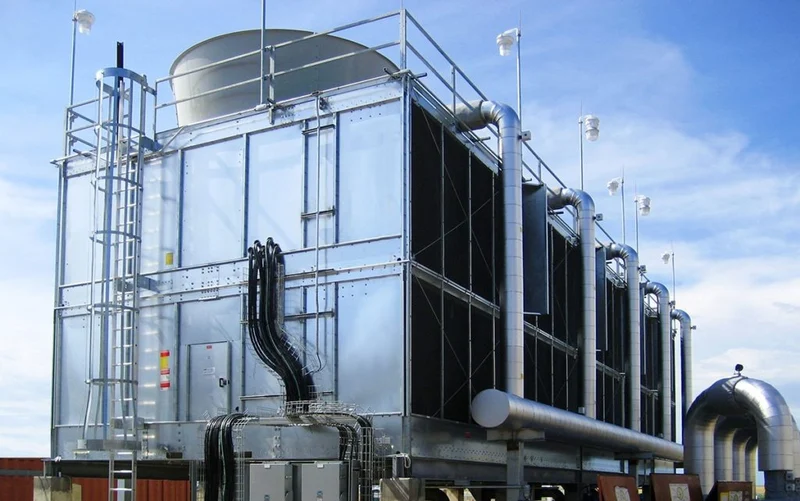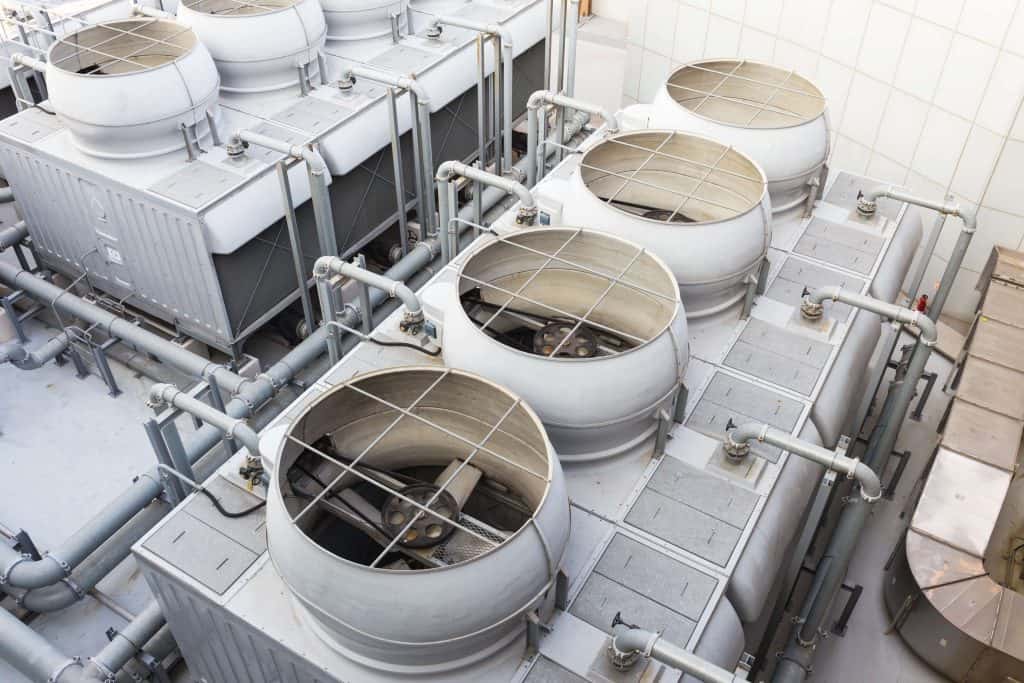Cooling towers are widely used across a variety of industries, but exactly what purpose do they serve in the industrial process? Below, we answer this question and explain how different types of cooling towers operate and their best uses.
Since 2002, Marley Flow Control has been an industry leader in the manufacturing, supplying and repairing of cooling towers. We are an Australian owned and operated brand and have the knowledge and experience to deliver the right cooling tower solutions for your needs. Over the years, we have worked with some of the country’s largest businesses and corporations we are pleased to call our clients.
As industry leaders, we have a high level of expertise and can provide a wide range of services – including cooling tower services and laser alignment services. If you need any cooling tower installation services – or laser shaft and coupling alignment – for your equipment, contact our highly experienced team to discuss your options today.
What is a cooling tower?
A cooling tower is a device designed and constructed to allow water and air to combine while water circulates through the tower. This allows some water to evaporate, which leads to the temperature of the circulating water being lowered.
The purpose of a cooling tower
Cooling towers are used with the purpose of lowering the temperature of the hot water coming from a heat exchanger – for example, a condenser. The cooled down water is then ready to be used in the heat exchanger again.
How do cooling towers work?
So, how exactly do cooling towers operate to achieve their purpose?
The hot water from the heat exchanger comes from an inlet and is pumped into the header of the tower. Then the nozzles contained in the tower spray the water over the cooling fill that is used to maximise the surface area covered by the water.

During this process, the water is exposed to much cooler air blown by large fans, which results in some of it evaporating, and in the remaining water being cooled. The released heat is then transferred from the water to the air, which becomes hot and humid. After that, the air is drawn up by the fans positioned at the top of the tower and released into the atmosphere – and the cooled water that collects at the bottom of the tower is ready to be re-used in the heat exchanger.
How does heat transfer occur in a cooling tower?
There are a few ways in which heat can be transferred in a cooling tower:
- Open circuit cooling. This is the most popular cooling tower type (also known as wet tower). Such towers rely on using water for cooling, releasing harmless drift emissions containing heated water droplets.
- Closed-circuit cooling. Also known as fluid cooling, this method uses water combined with glycol to cool the heated machinery. The liquid then circulates in a coil, staying within the tower without any exposure to the outside air. Fluid cooling towers are known for their solid performance and low maintenance requirements.
- Dry cooling. Some cooling towers achieve their purpose without using any water, instead transferring heat through a surface separating hot water from ambient air. A dry cooling tower may be used in places where water availability is limited – or where regulations ban any kind of plume. This type of tower is less efficient because of its high energy requirements.
How is airflow generated in a cooling tower?

Airflow can be produced and maintained in cooling towers using a variety of methods, such as:
- Natural draft. This method utilises the shape and design of the cooling tower to move the warm air up with the help of fans until it is released into the environment. Natural draft towers are normally located outside and resemble a very tall chimney. This type of cooling tower is especially popular with large industrial facilities – for example, power plants.
- Mechanical draft. These towers use a centrifugal fan or a propeller installed at the top to pull the hot, humid air from the bottom and blow it out of the top. The cool dry air from the outside is also sucked in by the fan. The fan speed can be easily controlled, which makes adjusting the tower’s capability very easy. These towers do not need to be as big as natural draft towers, which allows them to be located inside the facilities.
- Crossflow cooling. Some towers are designed to enable air to flow horizontally – and meet the water that streams down vertically from the top of the tower. As the area of water exposed to the air is limited in this design, more air is required for this tower to operate than would be required by other types of cooling towers. Crossflow towers are nearly silent and are easy to maintain and quite economical to operate.
- Counterflow cooling. This cooling method uses fans to allow air to enter through the bottom of the structure while hot water enters through the top. Nozzles are then used to spray the water into a fill. As the air moves through the fill, it becomes warm and humid – and is then pushed out the top of the tower by the fan.
Choosing the most efficient cooling tower for your needs
So, what cooling tower is best for your needs? The answer depends on many factors, such as the nature and conditions of your operations, your long-term development plans, government regulations affecting your industry, and many more.
To choose the cooling tower design that is best fit for purpose for your industrial operations, it is always best to turn to experts.
We can design, build, inspect and repair your cooling tower
Marley Flow Control offers a wide range of cooling tower design, installation, inspection and repair services. We are experts in repairing both the fill and mechanical components of a cooling tower and can also conduct a full annual assessment of your tower. We also provide comparisons between a comprehensive refurbishment and a new cooling tower installation.
Additionally, our team of highly experienced technicians has the skills and equipment to fit new motors, driveshafts, gearboxes and fans in the field, including long laser alignments of up to four metres.
Find out how we can use our expertise and engineering experience to deliver the right solution for your business needs. Contact us here for a free quote.
